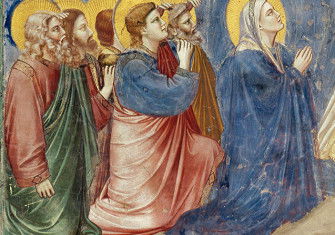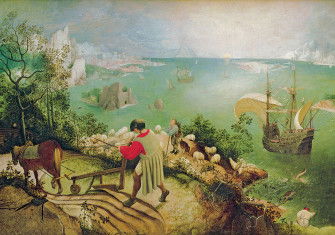
Radha and Krishna
Man and god seek love and unity in one of the most celebrated Hindu myths.
The Hindu deities Radha and Krishna declare their love for one another in a verdant rite of spring, depicted in an anonymous Indian illustration from the late 18th century.
The story of the love between the divine Krishna and the cowherder, milkmaid or gopi, Radha, his devotee, is among the most celebrated of all Hindu myths. Such was their love, the couple ultimately became one, unifying the masculine and feminine forms of god: Krishna representing its primeval form, while Radha embodied traditional ‘female’ traits such as spiritual bliss, the eternal nature of god and human consciousness of god’s existence. Krishna, it is claimed, enchants the world, while Radha enchants him.
The story of Radha and Krishna was popularised by the 12th-century Sanskrit poem, Gita Govinda, written by the Brahmin Jayadeva Goswani, the former court poet of Shri Lakshmana Sena, the king of Bengal. The 12-part epic recounts Krishna’s faithlessness and his subsequent return to Radha, and is widely understood as representing the human soul straying from its true allegiance before returning at length to the god which created it. The poem was composed in a grass hut in Champahatti, Navadwipa, north of what is now Kolkata, after Jayadeva turned his back on the sumptuous surroundings of the Bengal court.
Among the most famous of Sanskrit texts, the Gita Govinda was translated into English by Sir William Jones and published in the Transactions of the Asiatic Society, Calcutta in 1792.






